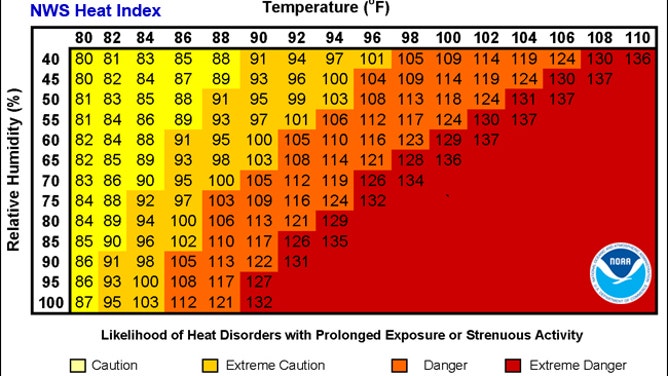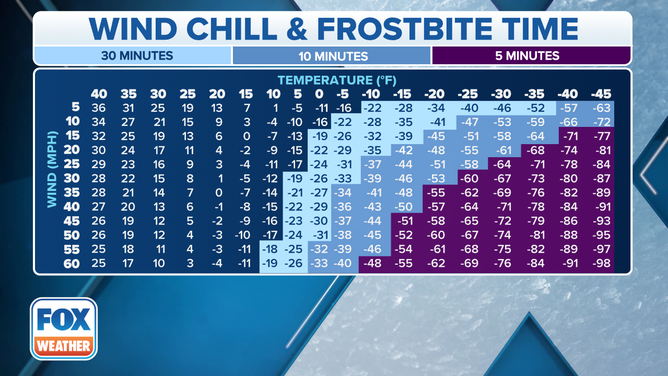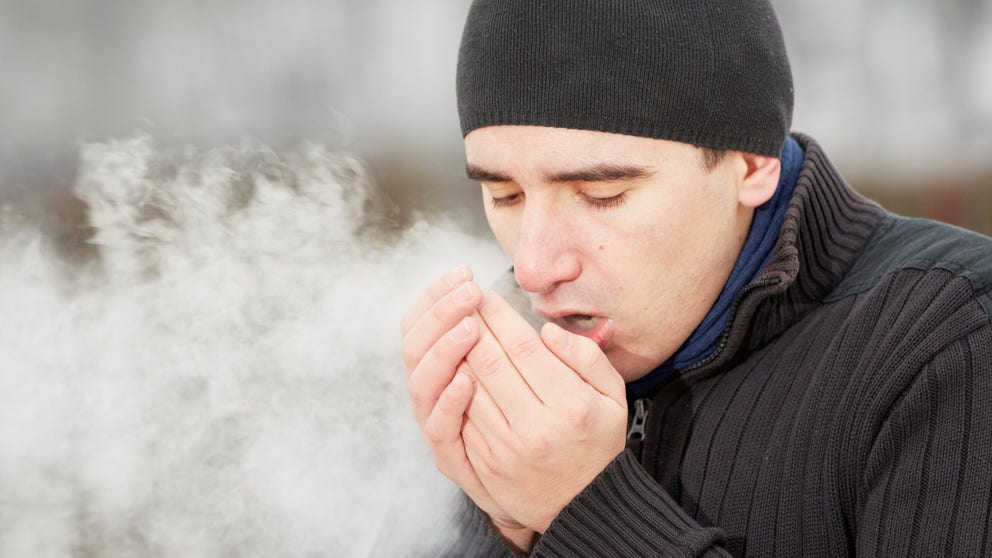What is the 'feels-like' temperature?
In the summer, it's called the heat index. In the winter, it's called the wind chill.
Too hot or cold? Here's how your body gets used to temperature
When you move from one climate to another, there are a multitude of processes that happen in your body to help you deal with the changes in the environment.
When you view the forecast in your FOX Weather app, not only will you find the predicted high and low temperatures, but you'll also see a value for the "feels-like" temperature.
It sounds simple, but there are a few factors that are considered when determining the feels-like temperature for a given time. It also depends on the time of year.
Basically, the feels-like temperature is how hot or how cold the air feels to the human body when factoring in variables such as relative humidity, wind speeds and even the amount of sunshine.
HOW TO WATCH FOX WEATHER ON TV
Heat index
In the summer, the feels-like temperature is also called the heat index.
The heat index is a measure of how hot the air feels when taking into account the combination of the air temperature and the relative humidity or dew point. That means on a humid day in the summer, the heat index will be notably higher than the actual air temperature.
WHY DEW POINT IS THE BEST WAY TO CLASSIFY HOW MUCH HUMIDITY IS IN THE AIR
The National Weather Service developed the chart below to easily determine the heat index. Simply match the air temperature on the horizontal axis at the top with the relative humidity on the vertical axis along the left-hand side, find where the two values intersect, and that number is your heat index.

The National Weather Service heat index chart.
(National Weather Service)
There is also a heat index calculator available on this NWS webpage if you prefer to use the dew point instead of relative humidity for the heat index calculation.
These heat index values were formulated for shady, light-wind conditions, but you should be aware that exposure to full sunshine can increase the "feels-like" temperature by as much as 15 degrees, according to the NWS.
The red areas on the heat index chart indicate extreme danger, meaning there’s a serious risk of heatstroke if you spend any significant amount of time outdoors in those conditions. The orange areas indicate danger, with muscle cramps and/or heat exhaustion likely if outdoors for too long; heatstroke is also possible with prolonged exposure and/or physical activity such as running or biking.
HOW TO TELL THE DIFFERENCE BETWEEN HEAT EXHAUSTION AND HEATSTROKE
Click here to read more about the heat index and why it's important to your health.
Wind chill
In the winter, the feels-like temperature is also called the wind chill.
The wind chill is how cold the air feels on your skin when factoring in the wind for any temperature at or below 50 degrees with wind speeds above 3 mph. That means on a windy day in the winter, the wind chill will be notably lower than the actual air temperature.
HOW COLD CAN TEMPERATURES GET DURING THE COLDEST TIME OF YEAR?
A thin layer of warm air, produced by body heat, exists just above your skin. The wind strips this warmth away. As wind speeds increase, the amount of heat lost from your body also increases. Therefore, the stronger the winds, the colder the air will feel.
When winds are light – 3 mph or lower – the wind chill is not a factor because the thin layer of warm air stays close to your skin.
The National Weather Service developed the chart below to easily determine the wind chill. Simply match the air temperature on the horizontal axis at the top with the wind speed on the vertical axis along the left-hand side, find where the two values intersect, and that number is your wind chill.

The National Weather Service wind chill chart.
(FOX Weather)
Since the chart goes in intervals of every 5 degrees and 5 mph, there is also a wind chill calculator available on this NWS webpage if you prefer to find a more precise value.
CLICK HERE TO GET THE FOX WEATHER UPDATE PODCAST
The blue- and purple-shaded areas in the wind chill chart above indicate how long it takes for frostbite to set in at the corresponding wind chills.
For example, frostbite would occur after only 10 minutes of exposure to a temperature of minus 15 degrees with 20-mph winds.
Click here to read more about the wind chill and why you should pay close attention to it when temperatures drop.
